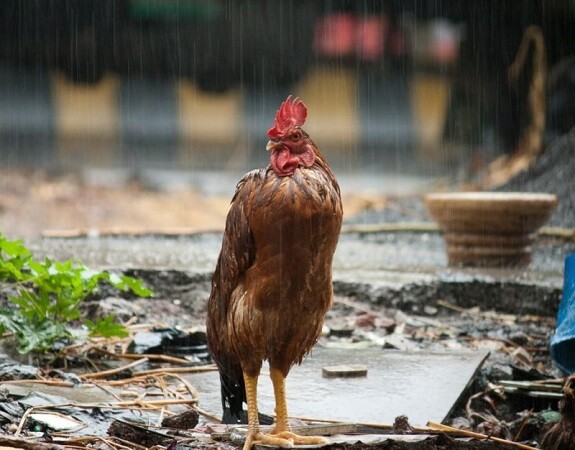

The cold and wet season come with its share of challenges in humans and livestock. Just like the human flu is making rounds in most households — as expected during this season — poultry too has its portion of rampant diseases observed in these wet and cold conditions. The cold and wet climate favours the propagation and spread of disease causing organisms. The wet season is associated with increased relative humidity and a drop in temperatures.
These factors coupled with possible cold winds lead to key changes in the body system of the bird. These climatic changes precipitate stress which leads to a weakened immune system and higher chances of contracting disease.
1. Fowl Pox
Fowl pox is a contagious viral poultry disease spread by mosquitoes and other blood sucking insects. It affects birds of all ages. Mosquitoes take advantage of the stagnant waters after the rains and use them as breeding sites. Bushes, stagnant water and lying around containers in the farm should be gotten rid of to avoid mosquitoes.
Pox lesions on the wattle, comb and other non-feathered body parts are some of the lesions associated with fowl pox. Birds should be vaccinated against fowl pox from three to six weeks of age depending on the geographical location.
2. Coccidiosis
In the cold season, farmers get easily tempted to close the poultry coop curtains in an attempt to keep the birds warm. The temperatures inside the poultry houses are therefore elevated and coupled with increased humidity the litter easily becomes wet.
This favours sporulation of the coccidian organisms that cause the disease. Coccidiosis is characterised by drowsiness, bloody stool to severe diarrhea, ruffled feathers and depressed birds. In severe cases, anemia and death occur.
Decreased egg production is experienced in laying birds. To avoid and control coccidiosis, ensure the house is clean and dry. Litter should be kept dry and wet litter removed. Ventilation and basic hygiene are paramount in keeping the litter dry. Avoid overcrowding by observing the required stocking rate of: Broiler- 1 bird/square feet, layers and kienyeji- 1 bird for every 2 square feet.
3. Fowl Cholera
This bacterial disease is highly contagious and mortality in acute cases is very high. It affects birds over six weeks old. The wet litter in poultry houses associated with the wet season is usually responsible for hosting the bacteria that causes the disease. Fowl cholera signs include yellow or green diarrhea, ruffled feathers, laboured breathing, and loss of appetite, mucoid discharge from the mouth or nostril among others.
4. Brooder pneumonia
This is also known as aspergillosis. It is a respiratory disease of chicken and turkey. Wet and mold-bearing litter is usually the cause of brooder pneumonia aka pneumomycosis. Aspergillosis occurs when chicks and poults (young turkeys) are exposed to spores of the fungus species aspergillus fumigates.
Infection occurs through inhalation of spores either from dump feed or litter. Signs associated with aspergillosis include dyspnea (difficult breathing) with open mouth breathing, lack of appetite and increased thirst.
Lethargy and death within a few days may occur in acute cases. Mouldy feed and litter should be removed immediately. Recovery occurs immediately exposure to spores is stopped. Poultry houses and equipment should be thoroughly cleaned and disinfected before chicks are placed.
5. Worm infestation
This is widespread in the cold season especially in birds under free range system. This is attributed to drinking water contaminated with intestinal worm eggs. Birds should be de-wormed during this season using broad spectrum anthelmintics/ dewormers such as piperazines and levamisole. Ensure the withdrawal period is observed.
 Contact Jaguza Support
Contact Jaguza Support